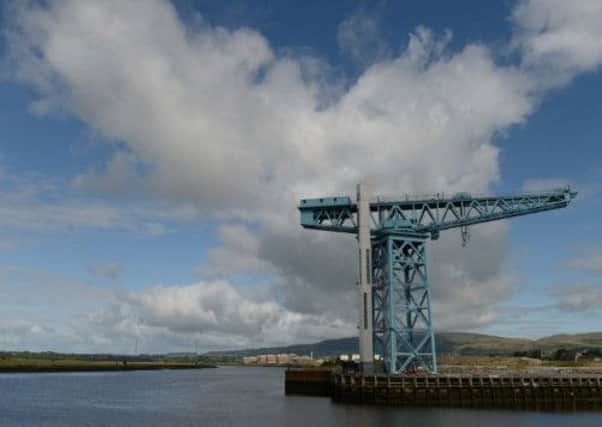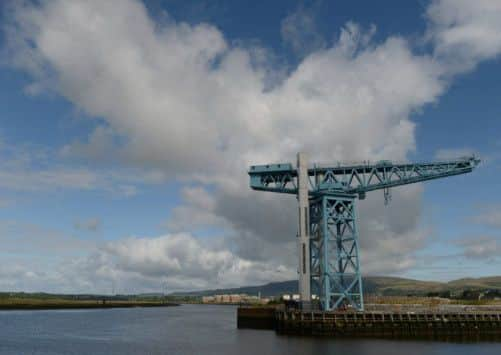Glasgow Titan Crane joins Eiffel Tower with award


The 106-year-old Titan Crane in Clydebank, near Glasgow, was used to fit out some of the biggest ships to sail out of the city such as the Queen Mary, Queen Elizabeth and QE2.
A tourist attraction since 2007, it remains an important feat of engineering and has now been designated an International Historic Civil and Mechanical Engineering Landmark in a ceremony.
Advertisement
Hide AdThe award is from the American Society of Civil Engineers (ASCE) board of direction and is endorsed by the Institution of Civil Engineers, the Institution of Mechanical Engineers and the American Society for Mechanical Engineers.


A plaque was unveiled beside the crane by Andrew Herrmann, former resident of the ASCE.
He said: “The Titan Crane is a beacon among cranes as it influenced the development of many similar cranes across the globe. ASCE is honoured to join for the first time with three other engineering societies to designate the Titan as an international historic engineering landmark.”
Previous recipients of the accolade are the Eiffel Tower, Sydney Harbour Bridge and Thames Tunnel.
Lyn Ryden, a board member of urban regeneration firm Clydebank Re-built and Titan Clydebank Trust, said: “Today’s designation is a tremendous boost to our educational work here in promoting the proud heritage of shipbuilding and engineering on the Clyde.
“Thanks to the Titan’s lifting power, John Browns shipyards were able to build some of the biggest ships in the world last century. The Titan is now sadly all that remains of the shipyards at Clydebank but this award puts the Titan on the world engineering map for today’s visitors and future generations of young people.”
Advertisement
Hide AdLast year the Titan, built for £24,600 by Sir William Arrol & Co in 1907, received an Institution of Mechanical Engineers engineering heritage award.
In 2007 the grade A-listed structure was refurbished and turned into museum about shipbuilding in Clydebank. A lift was also installed to take visitors up to the Titan’s 150ft-high platform.
Advertisement
Hide AdThe crane was responsible for fitting out many ships such as the big Cunard liners, Navy warships and, alongside Glasgow’s shipyards, was vital to Britain’s war efforts. It came through the Clydebank Blitz in March 1941 unscathed.